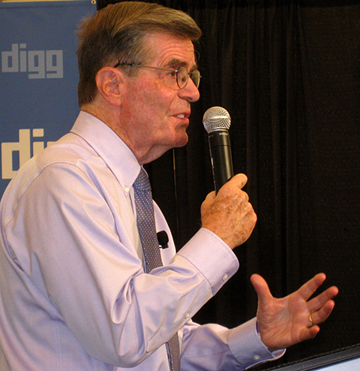
On December 1, 1969, a single number hung over my head like the Sword of Damocles. That innocuous written number had been tucked inside a blue plastic capsule, mixed with 365 other identical capsules, and then pulled randomly from a large glass jar. The number represented my birthday; it was the 71 capsule drawn.
I will never forget the nation’s first military lottery since 1942 because I would henceforth be more vulnerable to being drafted if I lost tenuous grasp on a student deferment, classified as 2-S. Rampant rumors warned: the first 150 birthdays drawn that year would be needed to fill quotas.
The number 71 wasn’t as dreadful as the first birthday selected that day: September 14. American men born between 1944 and 1950 on September 14 went to the front of the line to await a possible letter from the U.S. Selective Service System and, for many, involuntary military duty.
Young men throughout the nation joined me by watching this lottery spectacle on national television, most feeling some trepidation and anxiety. One random moment in this “reality TV show” could portend an ominous outcome: military induction and a complimentary airline ticket to the steamy jungles of Vietnam.
And in those days of explosive military escalation in Southeast Asia, even a student deferment might become worthless by summer vacation. For young men of that time, experiencing Vietnam stateside meant never knowing for sure if your next birthday would be celebrated in a foxhole.
Parallels between Vietnam War and Afghanistan War
U.S. invasions of Vietnam and Afghanistan have eerie similarities. Vietnam was ruled by Diem; Afghanistan is ruled by Karzai. Both leaders came from corrupt families, failing to achieve widespread public support, especially in vast rural regions.
In both countries at war, guerrilla extremists stubbornly frustrate efforts at nation building: communists in Vietnam and Taliban in Afghanistan. Ill-defined military goals, especially exit strategies, make both wars seemingly endless.
Both nations share histories of bungled attempts at dominion or regime change by empires with superior armies and technologies. Failed military domination by the Japanese and French preceded America’s presence in Vietnam. Botched dominance by the British and Russians precede America’s Afghanistan.
In November 1969, about 66% of the nation’s citizens believed it had been a mistake to send troops to fight in Vietnam. In November 2009, about 57% of Americans oppose the U.S. war in Afghanistan.
Even hawkish political arguments have conspicuous parallelism. Fall of Vietnam to communist takeover would be the first domino, with nations tumbling all the way to Mexico. Relinquishing Afghanistan to the Taliban guarantees expansion of fundamentalist extremism throughout the region, threatening friendly oil producing neighbors.
And both nations have idiosyncratic histories, cultural imperatives, language subtleties, nationalistic traditions and human motivations that U.S. policymakers did not fully comprehend before leading this nation to war, making these invasions appear naïve in retrospect.

As Theodore Sorensen, President John Kennedy’s speech writer and special counsel wrote recently, “I advised the president, ‘If ever there was a country that needed to save itself, that country is Vietnam.’” Sorensen now flatly concludes: “Today that country is Afghanistan.” Further, Sorensen observes: “America’s national security, much less its way of life, was never at stake in Vietnam, thousands of miles from our shores, nor is it in Afghanistan.”
Public support for the Vietnam War fell to the lowest level in opinion polls by October 1969. Coincidentally, that month also included an unprecedented outpouring of antiwar protests through The Moratorium to End the War in Vietnam on October 15. By some accounts, this strike and demonstration involved more Americans in a coordinated war protest than at any time in the nation’s history. It became the first major refutation of Richard Nixon’s handling of the war. Over 100,000 attended a Boston rally to hear anti-war Senator George McGovern. Future president Bill Clinton, then a Rhodes Scholar at Oxford, organized and participated in a demonstration in England.
One month later on November 15, over 300,000 protestors congregated in Washington D.C. in another massive Moratorium march. Who were these protestors? The New York Times reported: “Except for clusters of middle-aged marchers and a few in their latter years, the crowd in appearance could have been a merging of the college campuses across the nation.” A similar demonstration estimated at 250,000 filled the streets of San Francisco.
Given such unfavorable public opinion polls, why does the war in Afghanistan rumble and tumble onward, a war that has lasted nearly as long as America’s active military engagement in Vietnam? What single significant variable is different today?
Clearly, forces other than compulsory military draft compelled many to protest Vietnam so stridently, but one undeniable factor then, nonexistent today, was a military draft. On the contrary, millions of American men today between 18 and 25 do not face involuntary military duty, and this may help explain a lack of resounding and unavoidable public demonstrations against today’s wars.
What might happen if in addition to lobbying to end the war in Afghanistan, peace-seeking legislators proceed to reinstall the military draft?
Perhaps President Obama might then gaze from his Oval Office, as did Nixon 40 years ago, and see hundreds of thousands of young protestors vociferously denouncing wars in Iraq and Afghanistan, unambiguously demonstrating sentiments of a majority of the nation’s citizens.
